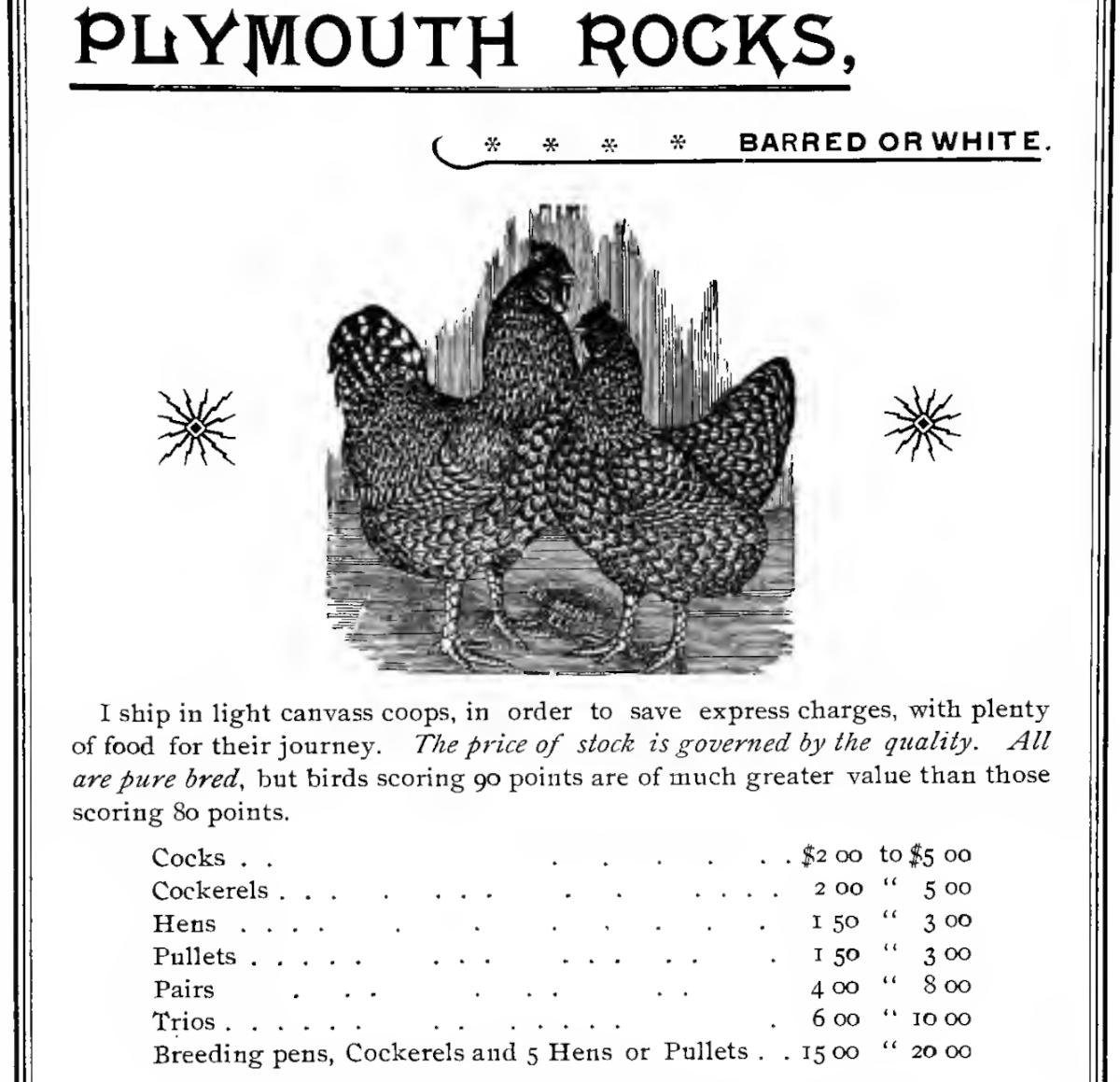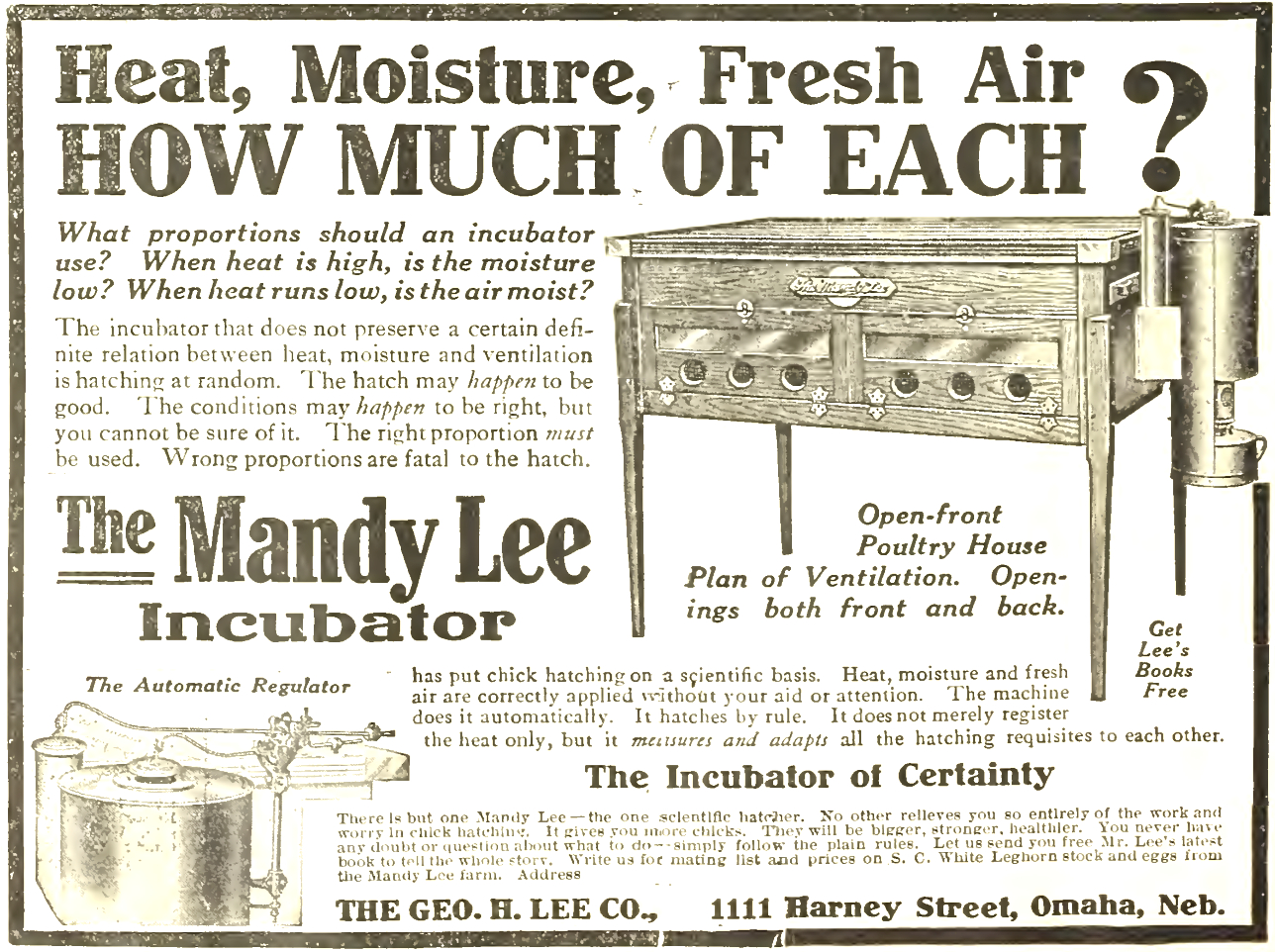How much did chicken, eggs and poultry supplies cost in the old days?

Historical cost of chickens:
Before the wide adoption of intensive farming methods chicken and eggs were more of a luxury food. Farmers kept small flocks of chickens that essentially had to feed themselves.
The hens were kept for eggs and the roosters fattened for meat. If you were to buy chicken in 1900 it was 30% more expensive than beef and pork.
All chickens available at the time were dual purpose heritage types. Hybrids didn't appear until the 1950's.
Below: An advert for chicken sales from 1921.

Breeding birds were $5 each hatching eggs started at 20 cents each.
Chickens feed cost from 12 to 30 shillings a hundredweight.
These birds were kept free range and predation and mortality were high. Chicken as a meat appeared on the market in small batches and with little regularity in supply.
Below: In 1922 an incubator cost between $18 and $25.

As demand for eggs increased you could only buy young fattened roosters, called spring chickens or old hens that had finished laying.
In the 1920's, eggs were 35 cents a dozen while the current average price in the US for a dozen eggs is between $2 and $4 depending on brand, location and type.
How much cheaper is chicken these days?
in 1923 chickens was 62 ¢ per pound, equivalent to over $9 a lb in today's money. Checking the prices at my store, chickens is currently on sale for between $1.50 and $1.90 per lb.
Below: By 1910 you could by a small oil powered brooder for $10 or a large one for $12.

The amount of chickens consumed has risen from around 6 to 10 lb per person per year in 1900 to over 90 lb per person per year in 2015.
These chickens were often sold with their feather on and their guts in so you were paying for a lot of waste as well.
When did chickens become cheap?
Chicken became cheap after world war two when new breeds were produced, incubators became widely available and intensive farming methods were adopted.
Chicken became cheaper to buy thanks to:
- Genetic advances and new breeds being developed.
- Incubators became cheaper, more widely available and reliable.
- Intensive farming methods adopted.
- New vaccinations and treatments meant better survival rates.
- Automation introduced in 1942 with gutting and visceration machinery.
- Increase in food efficiency of chickens.
- Increased growth rates.
- Research into the keeping , feeding and breeding of poultry.
- New feeds and continuous mass production of chicken feed.
- Refrigeration and storage technology improved and became more widely available.
- Transport networks and trade meant cheap chicken could be produced elsewhere and imported.
There was a gradual increase in good husbandry and bio security practises over the year that meant more birds survived to slaughter weight.
